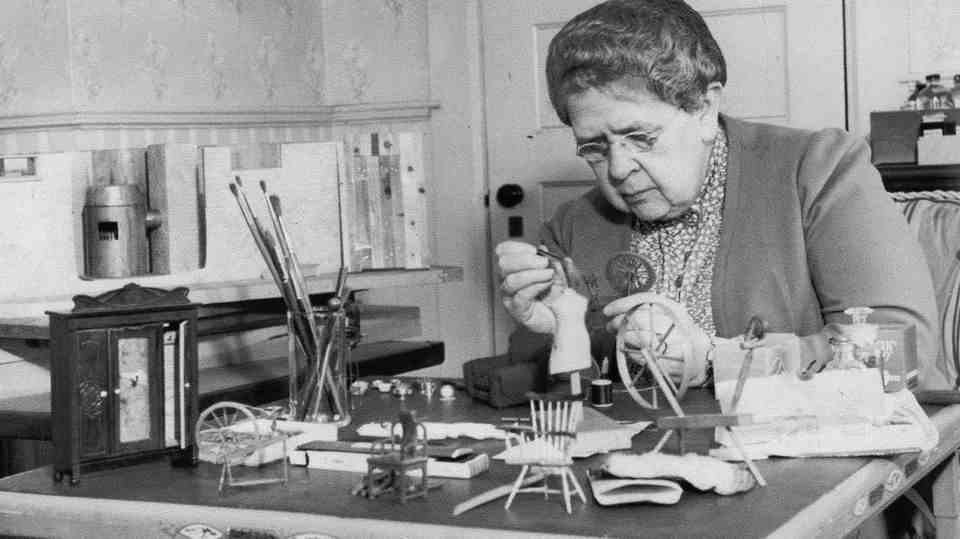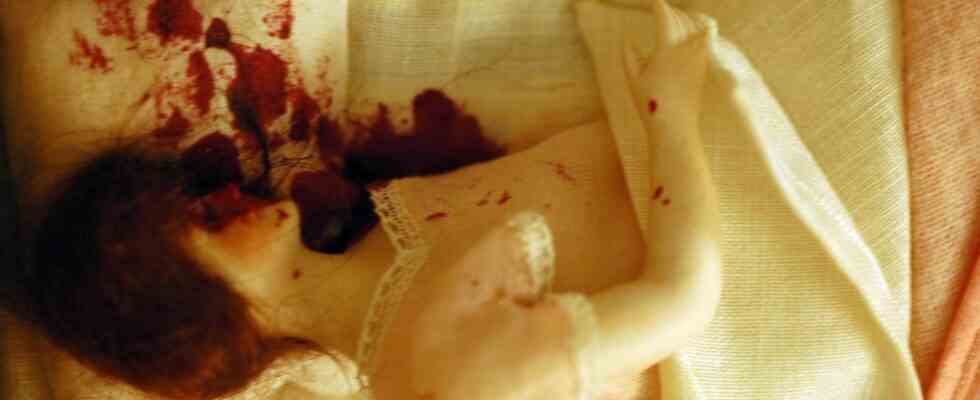Crime Scene Investigation (CSI) was fueled by inventions like the still camera, fingerprint analysis, and scientific methods like DNA testing. The eccentric millionaire and hobby detective Frances Glessner Lee also played an important role with her bloody dollhouses. At Harvard Medical School, she reconstructed the crime scenes of unsolved cases in small dioramas. Dioramas have been popular since the 19th century as a way of vividly reconstructing the past, but mostly they served to illustrate historical scenes such as the Roman Forum in museums.
fascination with the morbid
Lee called her models “Nutshell Models of Unexplained Death”. They still exude a morbid fascination today. The reduction of the size to the dimensions of a doll’s house, the murderous scenery and for some the knowledge that the case really happened and the murderer had escaped – such moments charge the small models emotionally. And it’s also strange to think that a friendly and rotund society lady would spend whole weeks trying to make the murders look as realistic as possible. Lee was a pioneer in forensics. At times she was considered the executive organ, the eccentric doll grandmother. But Lee was the driving force behind the project, which she fully funded. She herself would have liked to study medicine, but her parents married her when she was 19. Her father owned parts of International Harvester. After the death of her brother and her parents, she – now divorced – inherited the fortune. At that time, she was already a fanatical hobby criminologist, she initially collected specialist literature in a private library. But when she had the family fortune at her disposal, she decided to give her life a new turn in her mid-50s and in 1931 to set up and finance the first forensic science course in the USA at Harvard University. A turn to charitable work was not unusual for a woman of her class and age. The scientific study of murders for a charity lady is more likely.
society lady
As the only woman among 40 men, she led the seminars at the institute. She always remained a lady of society. She gave banquets for the attending detectives and coroners, personally oversaw lavish menus, floral arrangements, and table decorations.

Lee building their dioramas.
© Wikipedia / Commons
She became really famous for the dollhouses she made in the 1930s and 40s. Lee believed that the crime scene always held the key to solving the crime. You just had to learn to read it properly. The models were used for training. This is where aspiring detectives should learn how to investigate properly. And for Lee, properly investigating meant freeing oneself from suspicions and prejudices and recording all traces of a crime scene in detail. “Far too often, the police officer has a hunch and only seeks – and finds – evidence to support that suspicion, regardless of any other evidence that may be available,” Lee said. She taught her students a disciplined method of investigation—this involves a grid used to examine a crime scene in the form of a spiral.
Enormous effort
She equipped her 1:12 scale models with exceptional detail. Each model at the time cost between $3,000 and $4,500 to make and was based on real crime scenes and autopsies. She spent countless hours recreating her miniature worlds, including full sets of clothing for each victim. Doors and chests of drawers can be opened, corks can be pulled out of bottles, even belt buckles work. Lee used red nail polish for blood spatter. To show cadaver stains or the effects of carbon monoxide, she painted the dolls’ porcelain skin.
Students could practice their powers of observation on the models. Lee built identical rooms, but they differed in 30 minimal details and each represented a completely different course. Her course program did not end until 1966, after she died in 1962, and the grants from her inheritance dried up. But the models were saved by the Baltimore State Coroner.
Source: 18 Tiny Deaths: The Untold Story of Frances Glessner Lee and the Invention of Modern Forensics
Also read:
Vera Gedroits – this princess saved countless soldiers on the operating table
Giulia Tofana created the perfect poison and killed hundreds of husbands
Brownie Wise invented the Tupperware party—then she got kicked out
How a British woman eliminated German fighter planes with her invention

